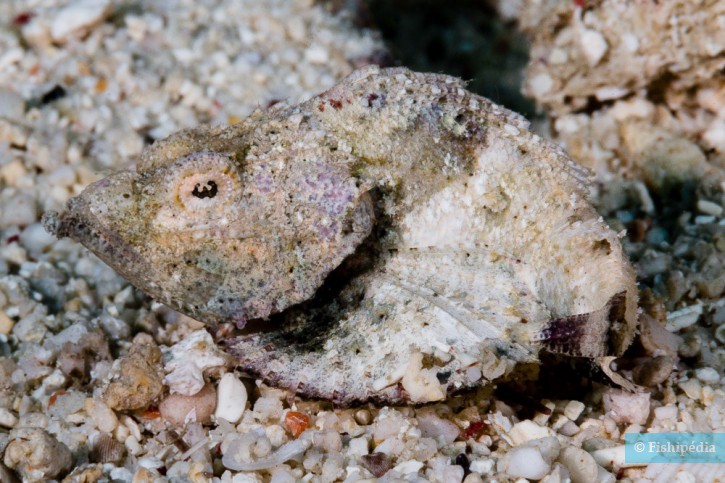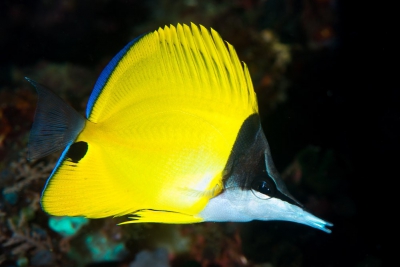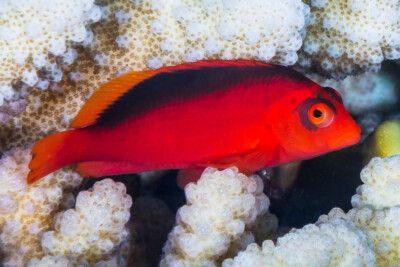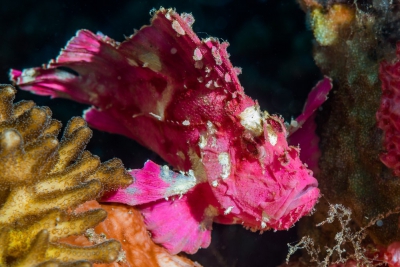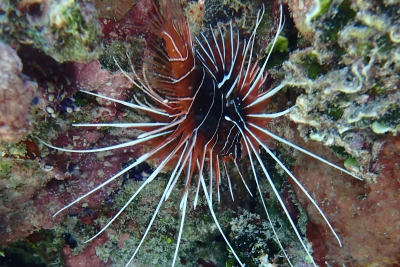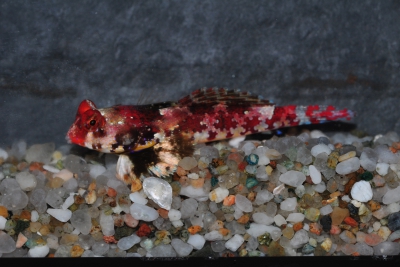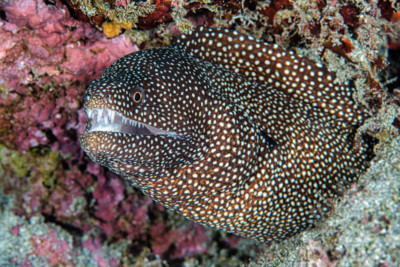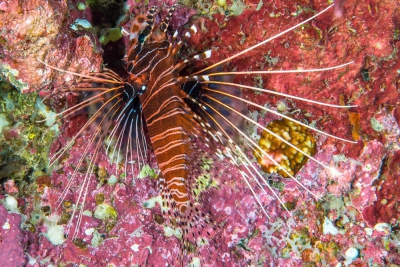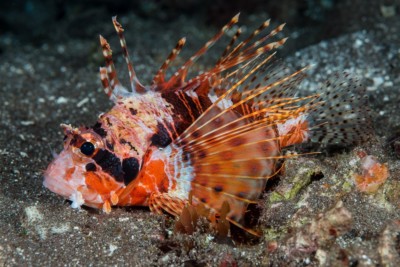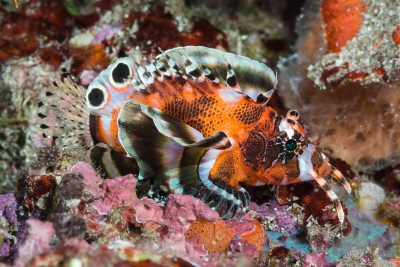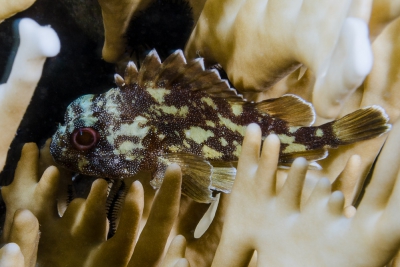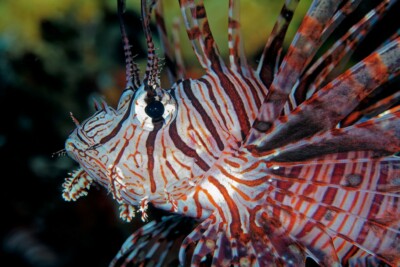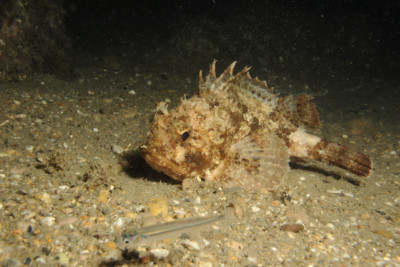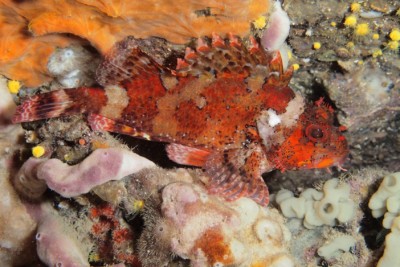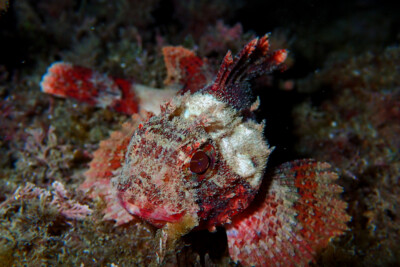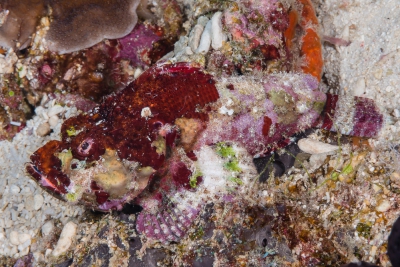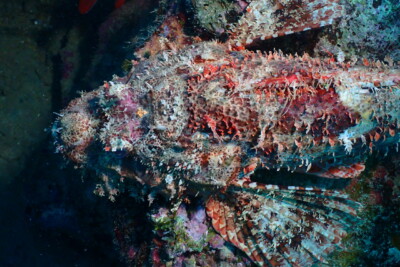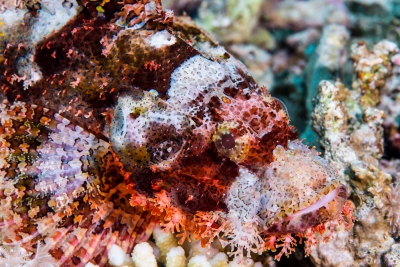flasher scorpionfish
| Scientific name | Scorpaenopsis macrochir |
|---|---|
| Descriptor | Ogilby |
| Year of description | 1910 |
| IUCN category (World) | LC |
| Family | Scorpaenidae |
| Genus | Scorpaenopsis |
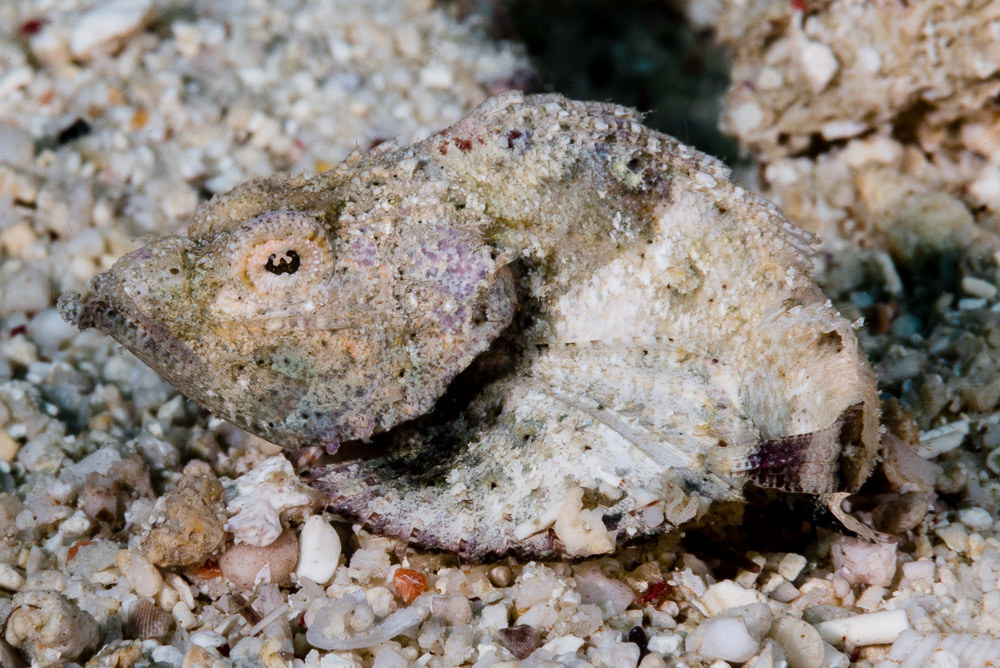

Introduction
The Scorpaenopsis macrochir is a small predator with behavior similar to stonefish. Although a specialist in camouflage, it has been observed in a large part of the Pacific Ocean.
Who is it?
Morphology
-
Type
-
Average size10 cm
-
Maximum size15 cm
-
ShapeUnclassifiable
-
Mimicrystone
-
Type
-
Average size10 cm
-
Maximum size15 cm
-
ShapeUnclassifiable
-
Mimicrystone
How to recognize This fish ?
The color of this fish varies depending on the substrate but is commonly seen in shades of brown to orange. Its mouth is typical of ambush predators, protractile and upward inclined.
It also has a small bump on its back, less imposing than in S. diabolus. The eyes are predominant and the snout relatively short.
Sexual dimorphism
Dimorphism not specified.
Behaviour & Life cycle
-
dietcarnivorous
-
Sociabilityliving as a couple or alone
-
territorialYes
-
Way of livingnocturnal
The flasher scorpionfish resides on the sea floor. It is a species that spends most of its time stationary, either partially buried in the sand or camouflaged in rocky areas.
This fish is a specialist predator in hunting other fish.
Reproduction
-
Reproductionovipare qui pond en eau libre
The flasher scorpionfish is an oviparous fish that spawns in open water.
Harmless species
This species does not represent any particular threats to humans when encountered in its natural environment.
Origin and distribution

Conservation status of populations (IUCN)
What is its habitat?
Natural environment characteristics
-
Temperature22 - 26 °C
-
Depth1 - 80 m
-
FlowMedium, Slow and Stagnant
Biotope presentation
This rare fish (or perhaps rarely seen due to its mimicry) resides in rubble areas and rocky bottoms. It is found in reefs and lagoons, generally at shallow depths.
Species of the same biotope
To go further
Sources & Contributions
Participation & Validation
The Fishipedia team and specialist contributors are committed to providing high-quality content. However, although the information comes from scientific sources or testimonials from specialists, the cards may contain inaccuracies.

Benoit Chartrer
Translation
Translation done with the valuable contribution of our translators, who make this information available to a wider audience. We sincerely thank them for their commitment.
Scientific partners
Tags
Species of the same family
Same genus
Species of the same biotope
